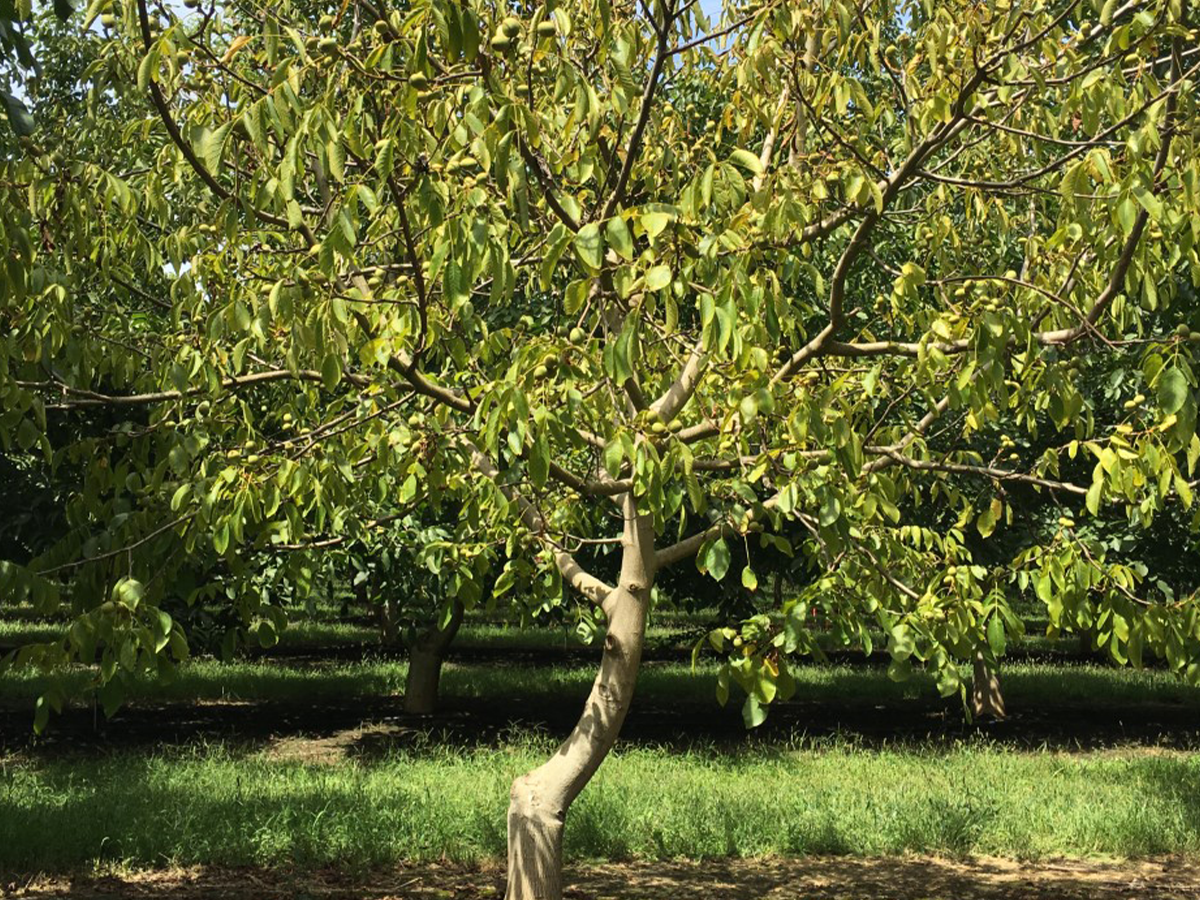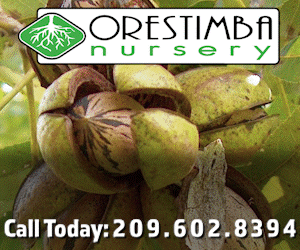Environmental conditions conducive to walnut tree stress and disease have been present in recent years, according to UCCE Farm Advisor Mohammad Nouri. Late winter and early spring rains, plus hot and dry summers, favor Phytophthora infections in walnut tree roots and crowns, causing tree decline and eventual death.
Symptoms of Phytopthora are usually dark, water-soaked lesions with irregular margins. Infected trees have chlorotic foliage and noticeable wilting and defoliation.
Nouri, in San Joaquin County Field, said he observed several San Joaquin County walnut orchards with trees showing typical Phytopthora symptoms. Some orchards were 10 to 15 years old, and he noted that the trees were likely to have become infected two to three years prior. He also has observed infections in six- to eight-year orchards.
In walnuts, Phytopthora rots can girdle the rootstock just below the soil surface, causing necrosis and killing roots. Phytopthora species P. cinnamomi and P. citriciola are two of the most significant species. They can be present in most orchard soils, mainly persisting as thick-walled spores called chlamydospores, which are extremely resilient and can remain viable in the soil for long periods. Rapid buildup of the pathogen inoculum and a high rate of infection are more likely influenced by the presence of water and excessive moisture.
Symptoms of Phytopthora root or crown rot become visible in early to mid-summer. Weak aerial growth or wilting, especially where there is poor water drainage, are early signs. The base of the tree at or below the soil line should be inspected for crown or root rot symptoms. Planting trees on berms helps keep their crowns above the zone where the pathogens are active. UCCE also recommends preventing soil compaction to improve drainage and not letting irrigation water splash on tree trunks as a rapid buildup of pathogen inoculum is influenced by presence of excessive moisture.
Irrigation events should not exceed 24 hours in soils with low infiltration rates or high water holding capacity. In those soils, shorter sets are recommended.
Resistant rootstocks are the best solution for the control of Phytopthora diseases. In soils with a Phytopthora history or orchards with heavier soils, clonal Paradox RX1 rootstock, which has high resistance to P. cinnamomi and moderate to high resistance to P. citricola, could be the best rootstock choice. Nouri said variety susceptibility is being investigated.
He is also working with Dr. Greg Browne at UC Davis on research involving testing surface water for Phytopthora.
Phytopthora can be managed with Phosphonate fungicides in an integrated management program. Applications are typically made one to two times a growing season, such as in spring and early fall as preventative treatments.

















